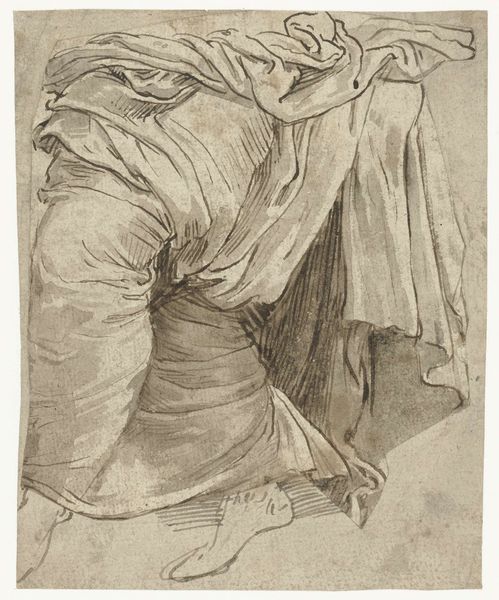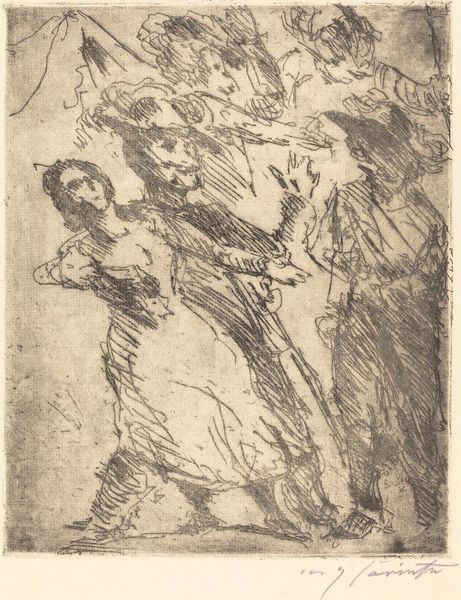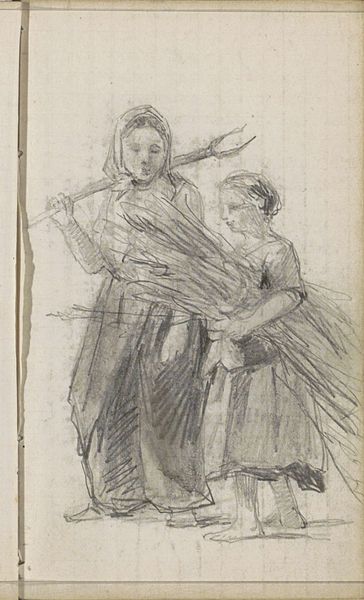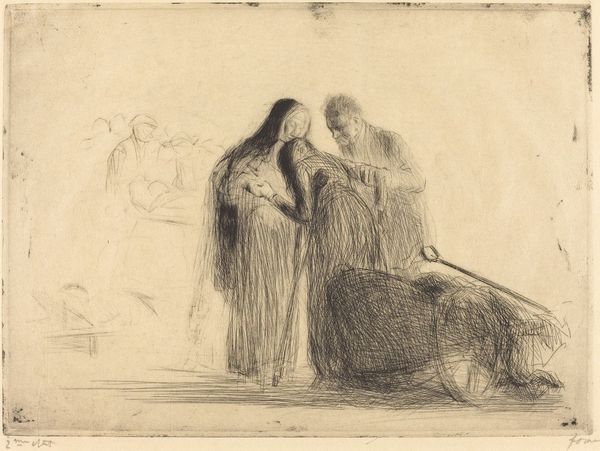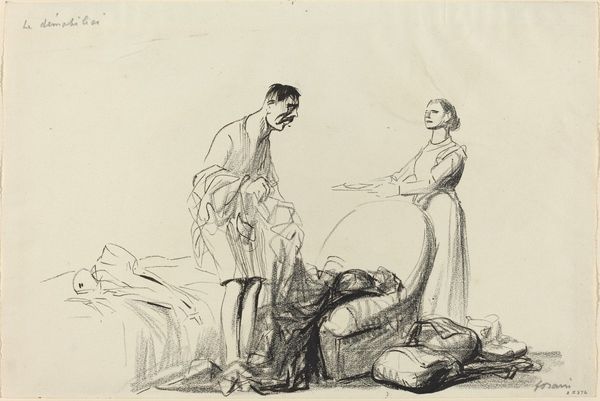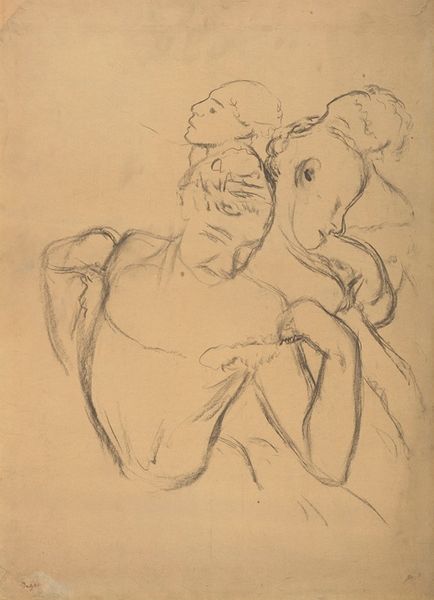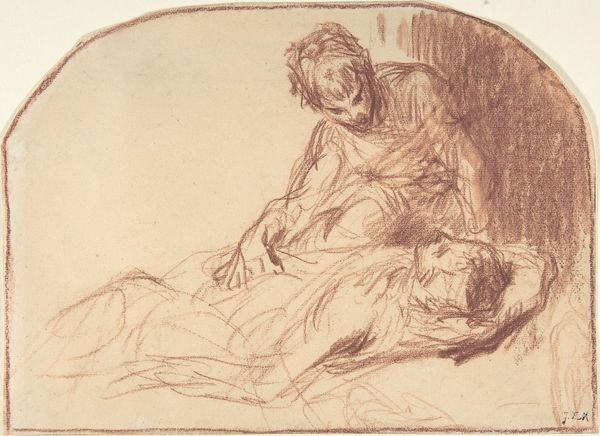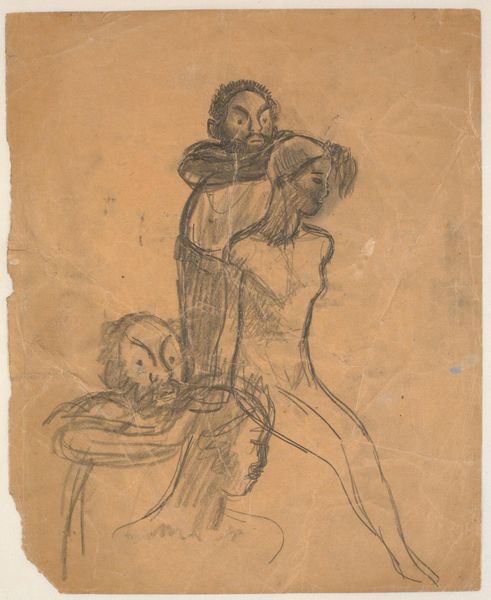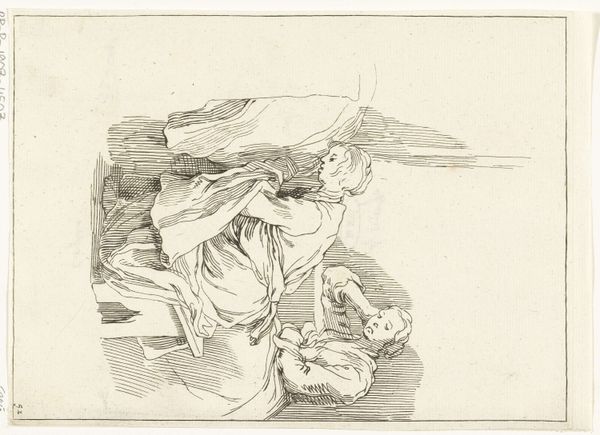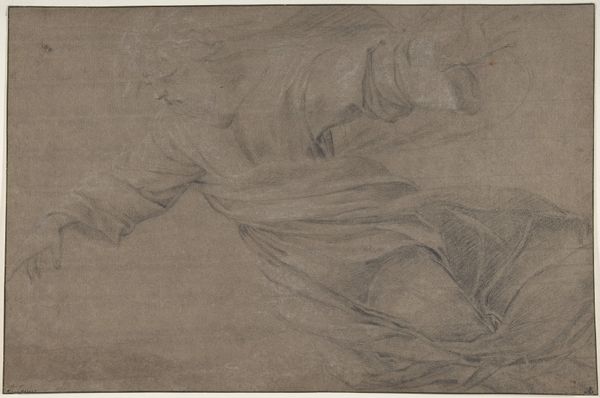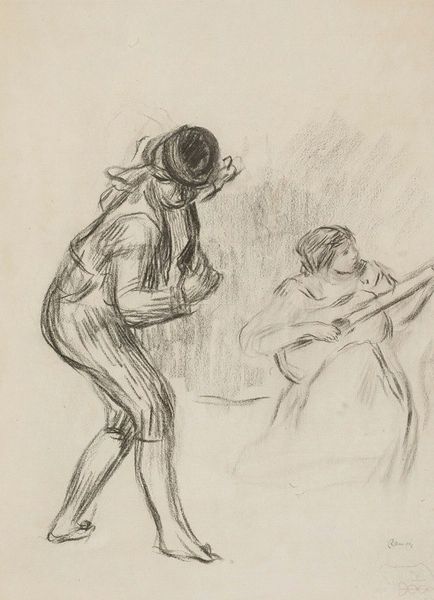
drawing, pencil
#
portrait
#
drawing
#
impressionism
#
pencil sketch
#
figuration
#
pencil
#
genre-painting
Copyright: Public Domain: Artvee
Curator: We’re looking at "Laundress Carrying Linen," a pencil drawing by Edgar Degas, created somewhere between 1885 and 1895. What strikes you most when you look at it? Editor: It’s raw, isn’t it? I get this feeling of fleeting movement, like catching a glimpse of working women in a hurry, all elbows and purpose. There’s a definite lack of idealization; it's grittier than you expect from Impressionism, maybe more honest. Curator: Precisely. The lack of color emphasizes the compositional elements. Note how Degas employs dynamic asymmetry; the figures aren’t centered. It’s an off-kilter, momentary capture, achieved with such economical use of line. Semiotically, the very sparseness invites an active viewing. Editor: Semiotically, haha! But yes, the lines are evocative. I can almost feel the weight of that linen those women are carrying, and I'm wondering what their stories are. It makes me consider all the unseen labor. It's like, "Hey, beauty has a price." Curator: One can also read the tension between form and content. Degas elevates a mundane subject matter through formal mastery. His innovative use of line creates a rhythm; look how the curves of the linen are echoed in the women’s forms, then sharply juxtaposed. It presents the formal elegance within toil. Editor: Totally! And there’s almost this unspoken, shared energy between the women, which feels really familiar. They're just getting on with it. Curator: Indeed, Degas transforms the prosaic into something quietly powerful. His formal approach highlights and emphasizes a very particular, under-seen kind of strength. Editor: And ultimately, I find that sort of art the most relatable, don't you? That’s where real art starts and exists: daily life and small acts of silent heroism.
Comments
No comments
Be the first to comment and join the conversation on the ultimate creative platform.
